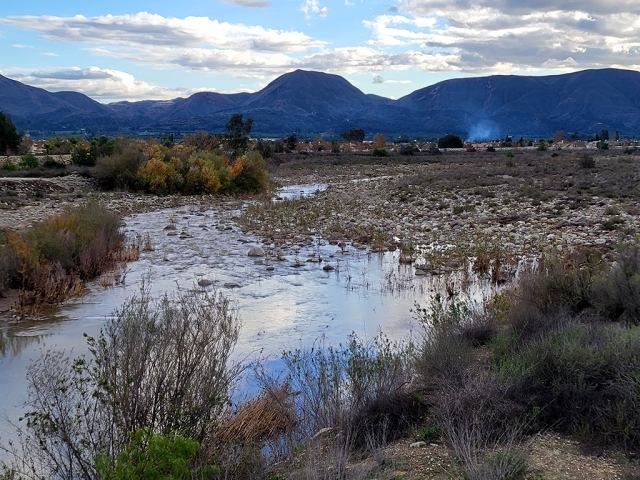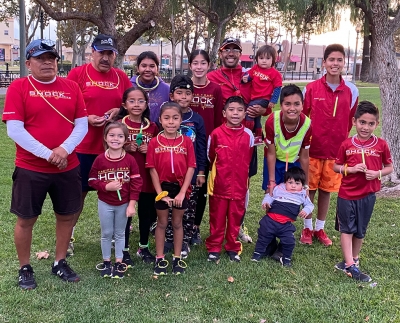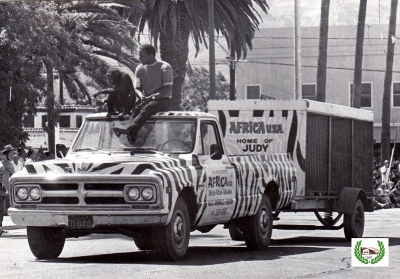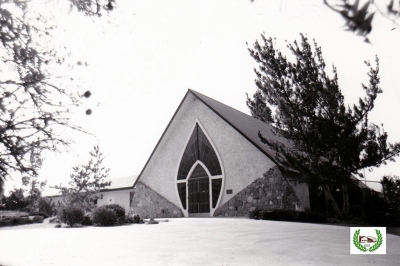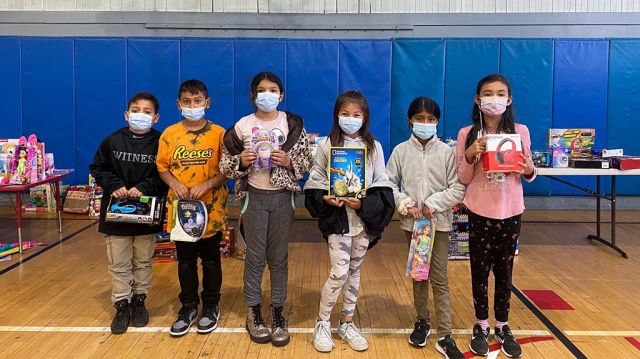|
By Gazette Staff Writers — Wednesday, December 29th, 2021
The Mighty Sespe is following after the rainstorm last week. According to https://www.vcwatershed.net/fws/reports/rain-season-report as of Tuesday, December 28, Fillmore received 3.85 inches and Piru received 3.92 inches of rain within five days. For updates visit https://www.vcwatershed.net/fws/reports/rain-season-report |
|
By Gazette Staff Writers — Wednesday, December 29th, 2021
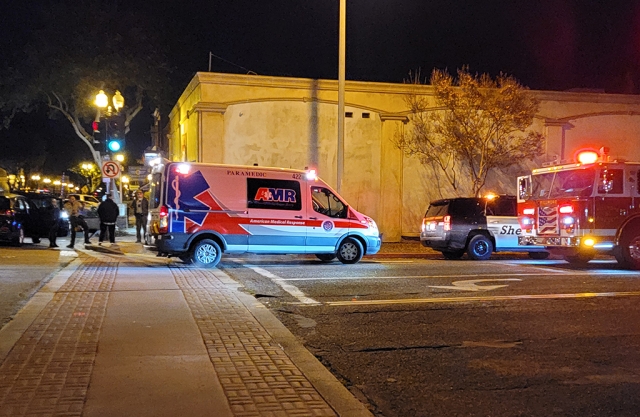 On Thursday, December 24th at 10:22pm, Ventura County Sheriff ’s, Fillmore Fire Department and AMR Paramedic responded to a traffic collision involving a Chevy and a black Kia at the corner of Central and Sespe Avenue. Both cars sustained damage. Cause of the crash is under investigation. Enlarge Photo |
|
By Gazette Staff Writers — Wednesday, December 29th, 2021
On Thursday, December 23rd at 3:40pm, Ventura County Sheriff’s and Fire Department responded to a call at Lake Piru’s Recreation area. A 19-year-old male was reportedly not breathing and despite efforts to save him, he was reported dead at the scene. The cause of death is unknown, but not considered to be suspicious and no signs of foul play. The cause of death will be determined by the county medical examiner. |
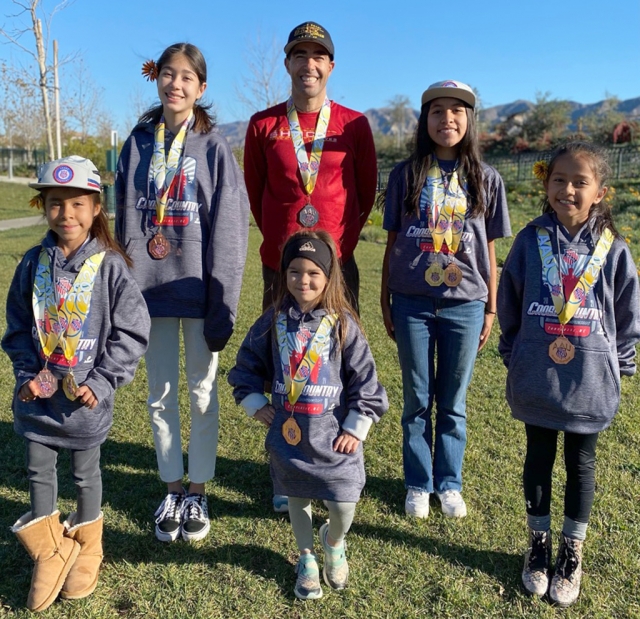 (l-r) (top-row) Paola Estrada, Isrrael Estrada and Niza Laureano. (bottom-row) Leah Laureano, Kamila Estrada, and Aaliyah Tarango. All competed at the AAU Jr. Olympics on December 4th in North Carolina. Photos courtesy Katrina Estrada. Enlarge Photo By Gazette Staff Writers — Wednesday, December 29th, 2021
Courtesy Katrina Estrada The Pacific Coast Shockwaves Fillmore concluded their cross country season by participating in the AAU Jr. Olympic which took place Saturday, December 4th 2021 at Charlotte, North Carolina. Our Fist local runner was our coach Isrrael Estrada. Running the open master 5k course in 20:49.48 and placing 9th place overall and 2nd in his group age 40/44. Bringing to fillmore the silver medal. Niza Laureano was our next runner athlete running 4K 14/15 group age with a time of 16:19.02 she placed 63rd overall out of 185 girls and placed 22nd in her group age 14years old. She helped her team to reach the podium as a 1st place team. Bringing to Fillmore 2 medals. Following were the girl’s 11 and 12 years old division. Paola Estrada completed in the 3K placing 13th place overall out of 217 girls and 7th place on her group age of 12 years old with a time of 11:19.11 earning the recognition of “All American” Which is only give to the top 8 runners on their group age. Behind her was her teammate Jolie Bakholdin placing 82 out of 217 girls and 48th place on her group age 12 years old with a time 12:26.20 there team placed 5th. The following race was Aaliyah Tarango competing in the 3K 9/10 girls Aaliyah placed 25th overall out of 169 girls with a time of 12:31.05 she placed 6th place of her group age earning the recognition of “All American “ and also bringing another medal. Leah Laureano was our next runner competing in the 2K. Leah placed 16th placed overall out of 105 girls with a time of 8:33.85 she placed 12th in her group age of 8 years old Leah helped her team to reach the podium as a 1st place bringing to fillmore 2 medals. Our final race was our younger Shockwave runner Kamila Estrada with only 4 years of age. Kamila competed in the 6 and under running the 1K. She placed 16th overall out of 30 girls with a time 5:13.16. We want to say thank you to all our coaching staff for getting us to the nationals. Head coach Temo Laureano, Isrrael Estrada , Daniel Bakholdin , Evelio Arriaga , Juan Toledo, Karina Estrada , MarĂa Elena Alcántara we also want to say thank you to all the parents for helping in all the fundraisers to pay for all expenses to get the kids to Jr. Olympics. |
|
By Gazette Staff Writers — Wednesday, December 29th, 2021
With forecasts calling for a series of rainstorms through much of the week, the Ventura County Fire Department encourages residents to prepare for the possibility of localized flooding and mudslides, especially in areas burned by recent fires. “It’s not too late to prepare. A quick survey of your residence and property can identify potential problems before the next set of storms begin,” Chief Mark Lorenzen said. “Simple steps can make a big difference in staying safe and protecting your home.” One area of particular concern is La Conchita, which has received 5.9 inches of rain in the past two weeks. Up to 2 inches of rain are forecast for that area from the storm expected to arrive Wednesday night, which could approach mudslide potential. Here are some tips for protecting your home and staying safe: • Clear gutters on your home and storm drains of leaves and debris • Use sandbags to protect flood prone areas • Prepare an emergency “go kit” and remember the six P’s of evacuation 1. People and pets 2. Papers, phone numbers and important documents 3. Prescriptions, vitamins, and eyeglasses 4. Pictures and irreplaceable memorabilia 5. Personal computers (information on hard drives & disks) 6. Plastic (credit cards, ATM cards, & cash) • Identify locations of safe refuge and prepare for extended periods away from your residence • Ensure all family members have updated contact information and can be readily notified For updates on emergency incidents, visit https://www.readyventuracounty.org/ and sign up for VC Alert. More details on rain preparations and where you can get sandbags are available at www.vcfd.org/news/ready-for-rain-safety-tips/ |
|
By Gazette Staff Writers — Wednesday, December 29th, 2021
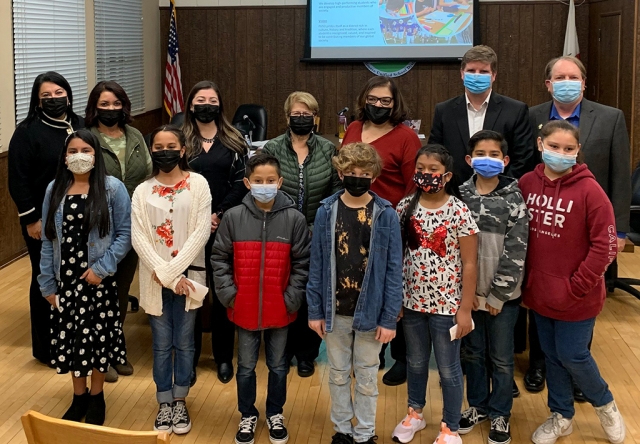 On Tuesday December 14th, students from San Cayetano Elementary gave a presentation to the FUSD Board of Trustees. The presentation showed highlights of San Cayentano and how they are creating tomorrow’s leaders with activities and programs made available to students. Thank you, San Cayetano students and Principal Sarabia-Rocha, for sharing. Courtesy San Cayetano blog. Enlarge Photo |
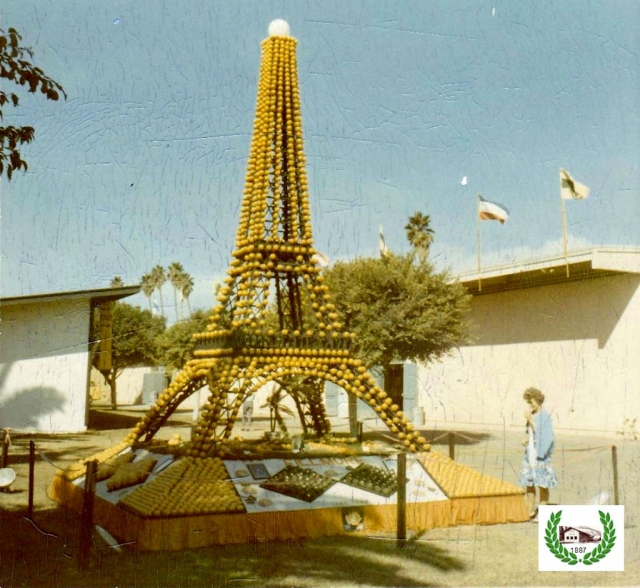 A citrus Eiffel Tower made with oranges in 1971 won the President’s Award at the Ventura County Fair as Fillmore Chamber of Commerce’s entry that year. Photos Courtesy Fillmore Historical Museum. Enlarge Photo By Gazette Staff Writers — Wednesday, December 29th, 2021
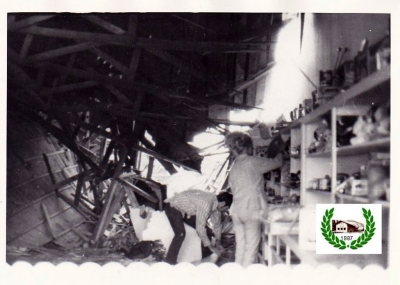 Interior earthquake damage to Shirley's on Central Avenue in February 1971 after the Sylamr Quake. Enlarge Photo 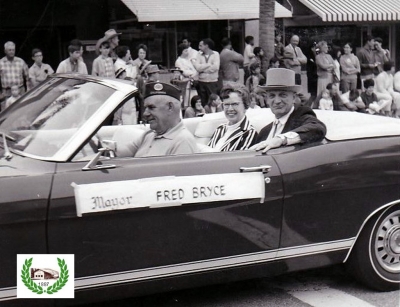 Mayor Fred Bryce, local CPA and captain of the Police Auxiliary, with Ruth Bryce in May Festival Parade. Enlarge Photo Courtesy Fillmore Historical Museum It’s traditional that as a year draws to a close to look back on the previous twelve months. Fifty years ago in December people in Fillmore did just that. So what happened in 1971? The first baby of the year was Cheryl Lynn Horn, daughter of Mr. and Mrs. Alan Horn. Fred Bryce, a local CPA and captain of the Police Auxiliary, was serving as Mayor. At 6 am on February 9th, Fillmore was awakened by an earthquake. The 6.5 Sylmar Quake was centered almost 27 miles from our town, but it caused damage especially to the east side of the business district on Central Avenue. A portion of the wall on what was then Briggs Hardware collapsed damaging not only that building but also Shirley’s Dress Shop next door. Repairs were made, but the upper floor of Briggs Hardware was never replaced. In October, fires threatened. A brush fire on Goodenough Road threatened several homes and prompted evacuations. At the same time, two human caused fires erupted on Guiberson Road, stretching fire personnel thin. Also in October, the Fillmore Chamber of Commerce entry at the Ventura County Fair was an Eiffel Tower made with oranges (similar to one done 50 years before) and won the President’s Award. The 1970 census counted the residents of Fillmore at 6,285, less than half of today’s population. Like today, Fillmore was undergoing a building boom with housing tracts being added throughout the town. Additionally, a motel was built as well as a “new” Safeway store (now Super A). The former Fillmore Theater underwent renovations and became the Town Theatre. On River Street, the Church of Religious Science, headed by Mildred Hinckley was opened. Africa USA was opened to the public mid-year, only to have its owner declare bankruptcy in December. The facility was taken over by Resorts International and continued to operate. At the High School, the basketball team had a 20-7 season. Debbie Dieter won the Lions Club Speech contest. Jose Gaitan was Senior Class President. 137 students graduated (up from 19 in 1921, fifty years before). Evangelyn Schiller was Valedictorian and Tim Gurrola was Salutatorian. There were 500 people in attendance at the Alumni dinner in June, 1971. Perhaps the biggest story of the year were the plans for the “Sespe Museum” created at the request pf the Chamber of Commerce. Edith Moore Jarrett would be the first curator with Dorothy Haase as assistant curator. It would be located on the ground floor of the Masonic Building and would open in 1972. This was the beginning of the Fillmore Historical Museum which will be celebrating its 50th Anniversary next year. Plan on joining us in the celebration. |
|
By Gazette Staff Writers — Wednesday, December 22nd, 2021
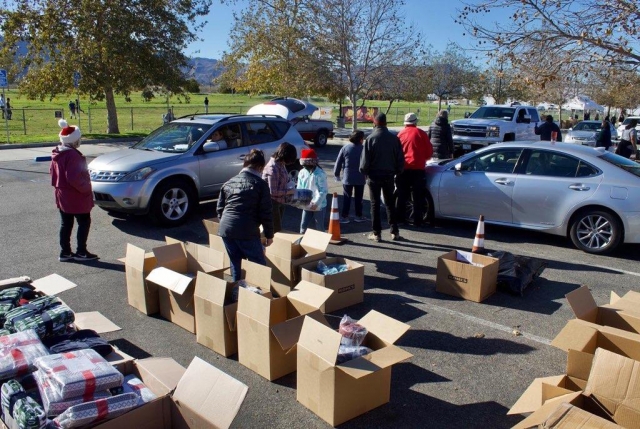 On Saturday, December 11th from 9am to noon at Fillmore’s Two Rivers Park, cars lined up for the Fillmore Community Holiday Giveaway. Families received age-appropriate toys, reading books and socks pre-packaged for pick-up. They also received blankets and a holiday bag of groceries if needed. Above and below, cars driving by to pick up their goodies, and volunteers helping package and hand them out. Photos courtesy Angel Esquivel-AE News. Enlarge Photo |
|
By Gazette Staff Writers — Wednesday, December 22nd, 2021
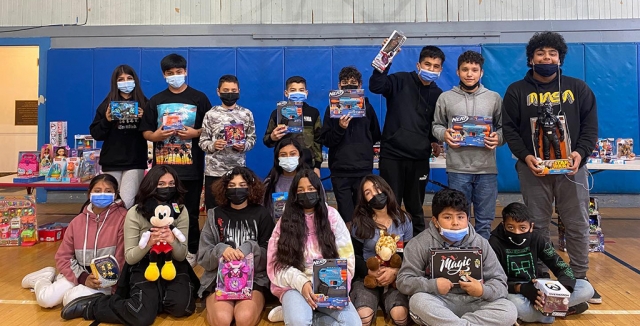 On December 15th, the Santa Clara Valley Boys & Girls Club gave a big shout out to @trusportz_company for the large donation of gifts to the Fillmore club. All the kids had an early Christmas. Photos courtesy SCV Boys & Girls Club Facebook page. Enlarge Photo |
|
By Gazette Staff Writers — Wednesday, December 22nd, 2021
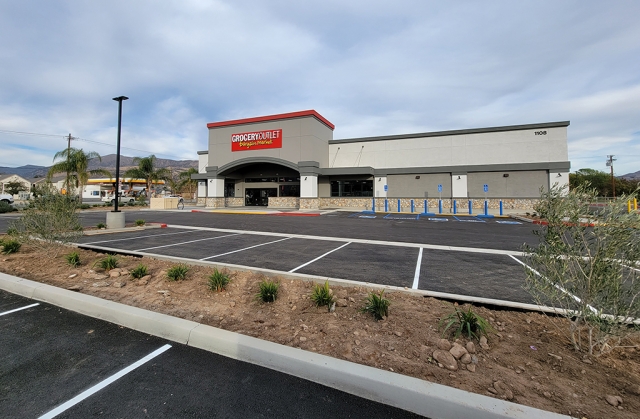 Fillmore’s Grocery Outlet has its new signs up and is preparing to open. Construction began in March of this year, and crews have worked non-stop to get the new outlet finished. The store is set to open in January 2022 according to Fillmore Grocery Outlet Facebook page. Enlarge Photo |

